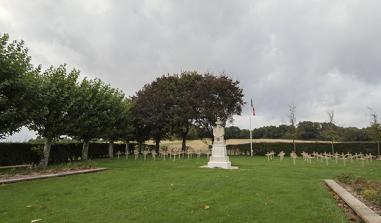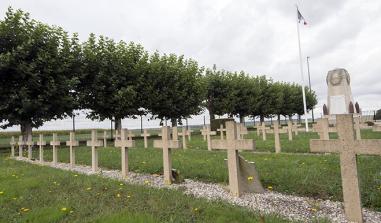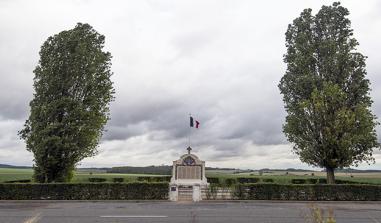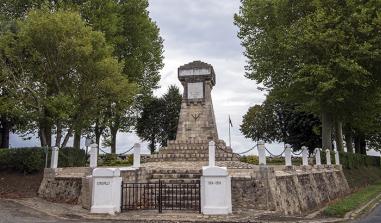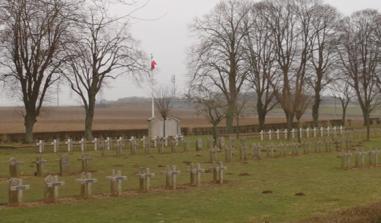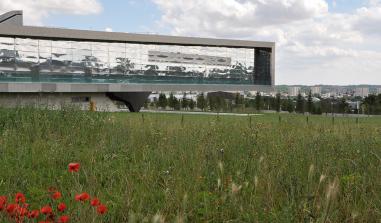Sénarmont indoor arena in Fontainebleau
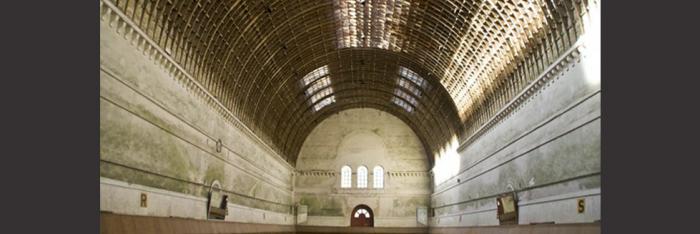
Built in 1807 in the Carrousel Quarter, a Fontainebleau Chateau outbuilding, under Napoleon I.
This arena was built in 1807 in the Carrousel Quarter, a Fontainebleau Chateau outbuilding, under Napoleon I. Its extraordinary wooden framework is one of the features that have earned it historical-monument status. Quartier du Carrousel was a Fontainebleau Chateau outhouse that was handed over to the armed forces in 1871. The history Emperor Napoleon I had had this arena and its remarkable single-vault wooden frame built in 1807. It was listed (along with the area around it) as an historical monument in 1913 and 1930, and named after General Sénarmont. The stables surrounding the Cour du Carrousel or Cour Carrée were also built around about that time. The latter is much older because again, the National Archives, the trace of its construction by Louis XVI in 1784 and 1785. It was used for the Petite Ecurie du Roi. 1815 to 1870 These buildings housed military staff serving under French kings and Emperor Napoleon III until 1870. 1871 to 1940 The Quartier du Carrousel was then handed over to the Ecole d'Artillerie (Artillery School) where young officers such as Ferdinand Foch, who went on to become a Marshal of France and of the United Kingdom, trained in the art of horse riding. That was when the arena was built and named Manège Drouot, after the Emperor's aide-de-camp and Imperial Guard General Major. World War II to the present day The buildings were abandoned for a short spell during World War II, but were then refurbished to house the École Nationale d'Equitation (National Horse Riding School) that a group of former members of the disbanded Cadre Noir (an elite cavalry corps) founded. The prestigious Military Equestrian Instructor corps was established there in 1945. The Cadre Noir corps joined the École d'Application de l'Arme Blindée et de la Cavalerie (Armour and Cavalry School) in Saumur in 1946. The military equestrian games were established then too. The centre was in Quartier du Carrousel. This centre briefly came under the École Interarmées des Sports (Army Sports School) in Fontainebleau but became independent again and was renamed Centre Sportif d'Equitation Militaire on 1 April 1973. As an army cavalry corps, it came under the Commandement des Ecoles de l'Armée de Terre (Army School Command) on 1 September 1976. That authority became the Commandement des Organismes de Formation de l'Armée de Terre (Army Training Unit Command) in 1993. The disbanded 8th Régiment de Dragons flag - and that regiment's traditions - were entrusted to its care in 1977 -and its traditions. Today, the buildings house the Centre Sportif d'Equitation Militaire (Military Equestrian Sports Centre) which oversees military equestrian sports across France. The French ministries of Culture and Defence have signed an agreement to develop and promote this centre.
Architecture This historical monument's highlight is no doubt its amazing single-vault Philibert-Delorme wooden frame (named thus after the architect who designed the first such frame in 1551). The arena is 66 metres long and 20 metres wide. The chestnut-tree frame sits on a cornice holding the string pieces and hoop bases. A second string piece sits on the walls and holds the cornice brackets and the top chords. The top chords and hoops converge on a umber of pegs (as it were) at the top. These components are all similar. They each comprise two 25-mm thick and 30-cm wide fir boards, overlap, and wrought-iron nails hold them in place. The 0.05 x 0.15 stanchions converge on the cornice hoops, two iron bands clamp them to the wall, and ridge ribs hold them in place. Splines on either side secure them to the ridge ribs. They are assembled in an alternating pattern: the same peg fastens each set of face-to-face ridge ribs. A few figures will provide a clearer impression of this building's daunting size: each truss (there are about one hundred) holds 104 ridge ribs and 312 mortises. Meaning there are about 31,000 mortises on the 100 trusses.
This building has been entrusted to the Ministry of Defence. France's Defence and Culture ministries signed an agreement to restore it, on 17 September 2005. Click here to see the list of other buildings...
Fontainebleau Chateau 77300 Fontainebleau Tél. : 01 60 71 50 70 Fax : 01 60 71 50 71 Mail : resa.chateau-de-fontainebleau@culture.fr
This building has been entrusted to the Ministry of Defence. France's Defence and Culture ministries signed an agreement to restore it, on 17 September 2005. Click here to see the list of other buildings...
Fontainebleau Chateau 77300 Fontainebleau Tél. : 01 60 71 50 70 Fax : 01 60 71 50 71 Mail : resa.chateau-de-fontainebleau@culture.fr
> Return to results
Practical information
Address
boulevard magenta 77300
Fontainebleau
Tél. : 01 60 71 50 70 Fax : 01 60 71 50 71
Weekly opening hours
Se renseigner pour l'accessibilité au site


